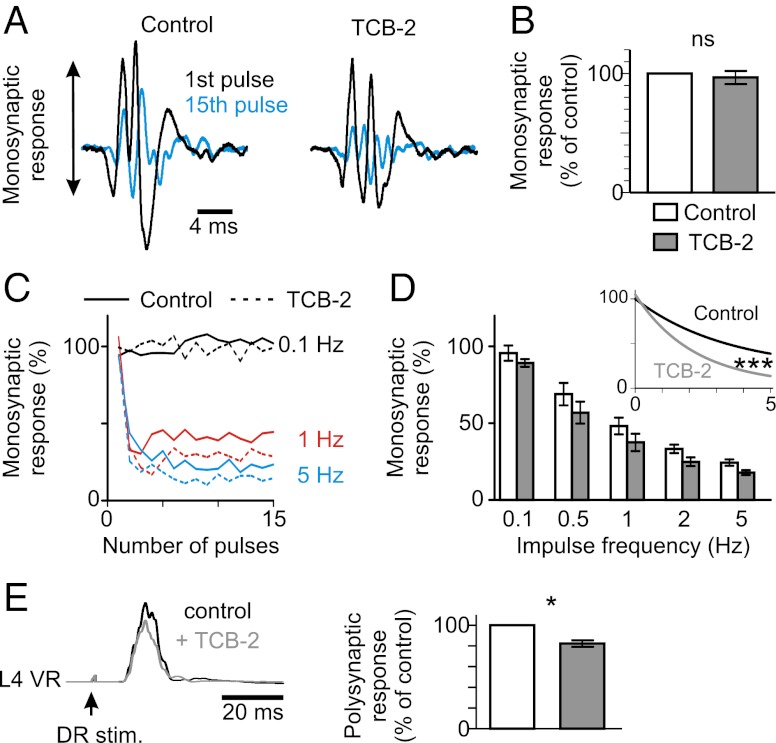Fig. 3.
Effects of TCB-2 on ventral root responses to dorsal root stimulation in the intact spinal cord in vitro. (A) Responses evoked in the L5 ventral root by supramaximal stimulation of the ipsilateral homonymous dorsal root, in the in vitro spinal cord isolated from rats at P6. The earliest component represents the monosynaptic response of motoneurons. The amplitude of this response decreased when the dorsal root was stimulated repeatedly (response to the 15th pulse at 1 Hz is shown in blue, superimposed with the control response to the first pulse). The slight increase in latency is attributable to a delayed firing of motoneurons as the pulse number increases. The amplitude of the response to the 15th pulse was much smaller after adding TCB-2 (0.1–0.15 µM). (B) Relative amplitudes of the monosynaptic responses delivered every 30 s before and 20–30 min after adding TCB-2 [percentage of control before TCB-2; P > 0.05 (Wilcoxon paired test); n = 12]. (C) Relative amplitudes of the monosynaptic responses to 15 consecutive stimulations at different frequencies (0.1 Hz, black; 1 Hz, red; 5 Hz, blue) before (continuous line) and after adding TCB-2 (dotted line). This is the same experiment as in A. (D) Mean (± SEM) relative amplitudes of the monosynaptic reflex at different stimulation frequencies in seven animals at P5–P6 before [controls in artificial cerebrospinal fluid (aCSF)] and after TCB-2 application (0.1–0.15 μM). Twelve values (the first three discarded) were averaged for each animal. The RDD was significantly increased by TCB-2. ***P < 0.001 (one-phase exponential decay regression). Note that for each frequency of stimulation, except at 0.1 Hz, the difference between before and after TCB-2 was significant [P < 0.05 (Wilcoxon paired test)]. (E) Mean envelopes of the ventral root (VR) burst evoked by stimulation of the ipsilateral homonymous dorsal root (DR) before and after adding TCB-2 (0.15 µM). *P < 0.05 (Wilcoxon paired test; n = 7).

